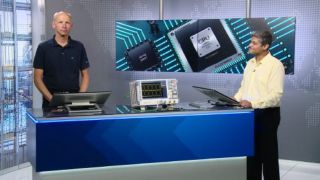Ethernet testing and data transmission technologies
Ethernet for computer networking was first introduced commercially in 1980, and adopted and standardized as IEEE 802.3 in 1983. By the end of the 1980’s Ethernet was the dominant local area network technology. The original much bulkier cable was superseded by the current cable with four twisted pairs of wires supporting 10BASE-T2 (using 2 of the twisted pairs) in 1990.
Maximum Ethernet data rates have increased from originally 2.94 Mbit/s now up to 400 Gbit/s. Currently, in data rate terms, the slowest link in the chain from device to device in many LAN is the copper twisted-pair cables, the basic cabling itself. The vast majority of installed cabling is Category 5/5e and Category 6 which supports 1GBASE-T with a maximum data rate of 1 Gbps (10 and 100 Gbps data rates require fiber-optic cables). 2.5GBASE-T and 5.0GBASE-T make it possible to increase the data rates to 2.5 Gbps, respectively 5 Gbps, on the existing cables for distances up to 100 meters.
Ethernet technologies have subsequently been adopted for other applications. Transmissions using single twisted pair cables, designated by “T1“ as in xBASE-T1, has turned Ethernet from incompatible with the motor car environment to a technology of choice for higher data rate signals in vehicles. Initially developed by Broadcom and marketed as BroadR-Reach, then promoted since 2011 By the OPEN Alliance (One-Pair Ether-Net) special interest group, the technology has been adopted as part of the 802.3 family of Ethernet standards, 100BASE-T1S as 802.3bw. The “S” is for short distance, under 15 meters, adequate for motor cars (40 meters is also supported). The physical layer is optimized for a single twisted pair of unshielded cables to significantly reduce wiring costs and weight, while retaining an acceptable level of EMC performance.
Automotive ethernet compliance testing
While xBASE-T1S has enabled Ethernet for motor cars, 10BASE-T1L (long distance; a range of up to 1000 meters) is the doorway for seamless Ethernet connectivity to the field-level devices (sensors and actuators) essential for automating manufacturing and processing installations; industrial Ethernet. 10BASE-T1L solves the challenges that, previously limited the use of Ethernet for process automation. These challenges include power, bandwidth, cabling, distance, data islands, and safe connections to hazardous areas applications. 10BASE-T1L can re-use the single twisted pair cables installed originally for technologies such as 4ma-to20mA, Highway Addressable RemoteTransducer, (HART) and Control and Communication (CC)-Links.
















